- Apply
- Visit
- Request Info
- Give
Scroll

Young children are hard-wired to express themselves in creative ways. Even very young infants respond to music physically and vocally, while toddlers delight in dancing and scribbling and preschoolers spontaneously make up songs and create increasingly complex works of art.
Although the arts are a critical component of how children learn and how they process what they've learned, the arts are not always viewed as a priority in learning settings. Early childhood professionals can help children develop these important skills by:
- Providing lots of opportunities for children to engage in creative play and expression
- Ensuring that children have access to music, instruments, and a variety of art materials
- Modeling active participation in music and dance
- Ensuring that the majority of art activities are open-ended and child-directed rather than product-focused
The videos and resources below illustrate strategies and ideas for supporting the development of young children's creativity and love for the arts.
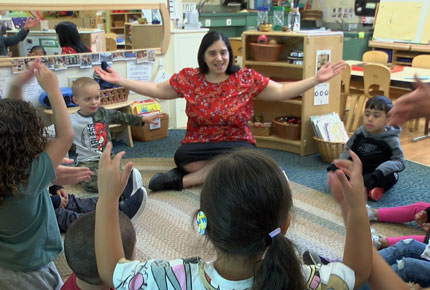 Supporting Music Development in Early Childhood Settings (9:30, 2023)
Supporting Music Development in Early Childhood Settings (9:30, 2023)
Children need early opportunities to engage in rich, active music-making in order to fully develop their innate capacities, but early childhood teachers don't always feel they have the skills to support musical development. This video describes strategies that early educators can implement with young children to provide ample opportunities and support for musical exploration and expression.
See video and discussion questions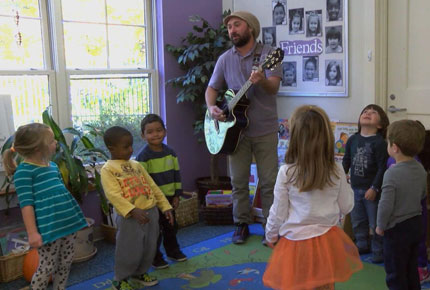 The Importance of Music in Early Childhood (7:08, 2023)
The Importance of Music in Early Childhood (7:08, 2023)
Nearly all children are born with the capacity to develop basic music skills, but those skills need to be nurtured early on. In this video, teachers and music educators discuss how music supports children's development in a variety of areas and the importance of supporting musical development in early childhood.
See video and discussion questions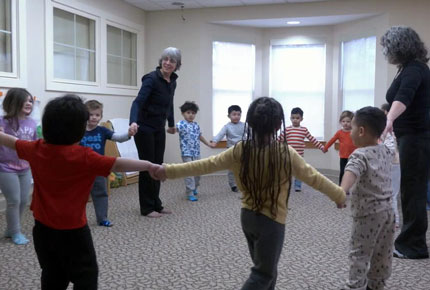 Creative Movement in Early Childhood Settings (6:54, 2023)
Creative Movement in Early Childhood Settings (6:54, 2023)
In this video, dance educator Stephanie Caldwell describes the many benefits of engaging young children in creative movement. She explains how she approaches movement lessons with preschoolers and how she structures group discussions afterwards to help children connect their movements with larger concepts.
See video and discussion questions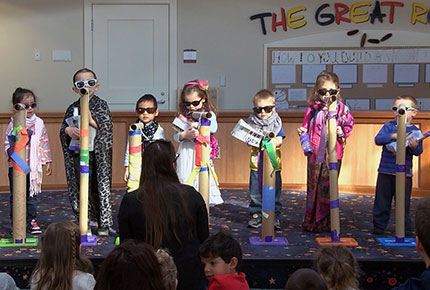 Following Children's Interests: The Purple Room Band (3:24, 2017)
Following Children's Interests: The Purple Room Band (3:24, 2017)
When children get excited about something, adults can build on that interest to engage children in a meaningful, longer term learning experience. In this "Reflections from the Field" video, Sydney Rodriguez describes how children in her preschool classroom got excited about the idea of forming a band and performing for the entire center. She explains how she built on that interest by engaging children in a series of connected learning experiences, leading up to a culminating performance. She also reflects on the amount of time required to fully engage the children in all the steps of the process, and on the importance of regularly incorporating music into early childhood classrooms.
See more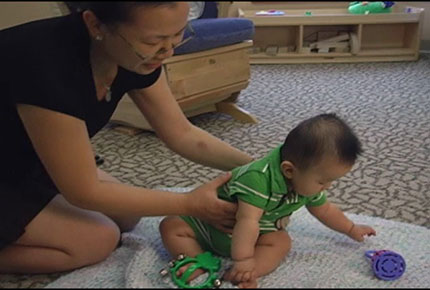 Supporting Thinking and Learning in Infants and Toddlers Through Active Music and Play Experiences (2:37, 2010)
Supporting Thinking and Learning in Infants and Toddlers Through Active Music and Play Experiences (2:37, 2010)
Research shows that movement supports children’s cognitive development. Infants quickly learn that banging, squeezing, or shaking a toy can produce interesting results. This video from the "Supporting Children Through Physical and Outdoor Play" series explores ways to use music and active play experiences to help infants and toddlers learn cause and effect.
See more2014 TIMPANI Toy Study (14:33)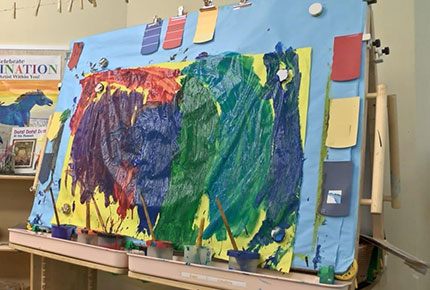
The Center's annual TIMPANI (Toys that Inspire Mindful Play and Nurture Imagination) Toy Study researches how young children in natural settings play with a variety of toys and identifies toys that best engage children in intellectual, creative, social, and verbal interactions in preschool classrooms. In 2014, one of the highest-scoring toys was paint and easel, which scored particularly high on creativity, as described in this video.
See more
